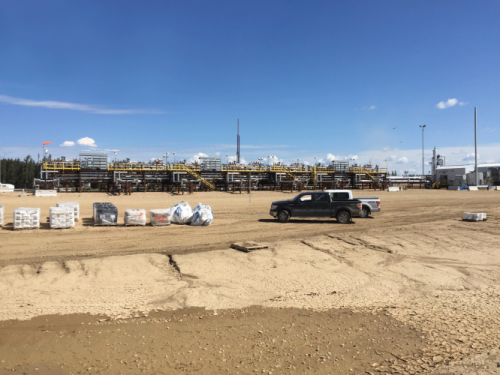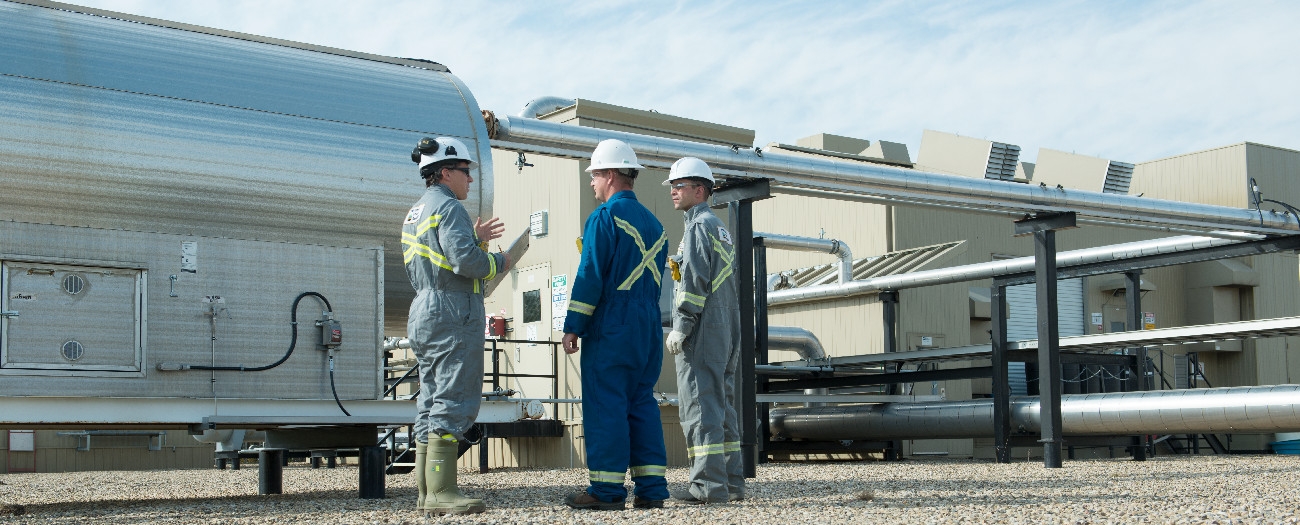“Super inspection” puts Alberta’s energy facilities to the test
Alberta - December 19, 2016It’s not “business as usual” to see 34 coverall-clad inspectors crawling over one energy site in less than a week, but it soon will be.
Earlier this year, staff from three branches of the Alberta Energy Regulator (AER) worked side-by-side to plan and conduct one dynamic, fast-paced, five-day inspection at an in situ facility north of Lac La Biche that produces 40 000 barrels of oil a day. This was a first-time move for the regulator, and one that will open doors for more thorough and cohesive assessments of a company’s operations.
“We’re breaking down those silos to really understand the functions and intentions of different groups, which is just a better and more efficient way of doing business,” explains Lawrence Jonker, inspection leader and technical specialist with the regulator’s Environmental and Operational Performance Group.
The norm for conducting inspections is to have small teams of AER inspectors fan out to sites across the province throughout the year, with each team sent there to put specific areas of an operation under the microscope. Some will only assess the emissions produced by the operation or pipelines, while others will only focus on the facility structure and the operations side.
But, as with most industries, modern practices are changing the way organizations do their work, and the AER is no exception. To keep up with the times, rather than inspect areas individually, the regulator has been working on ways to combine them into one integrated, super inspection that involves people who would normally work together on paper, but never in the field.
Despite having different functions, focus areas, and ways of getting things done, the end goal for everyone involved is the same: ensuring that what companies report to the regulator is, in fact, true.

Making the unfamiliar familiar
Unless you’re an inspector yourself, most people don’t know what takes place during an inspection. This goes for AER staff as well—not everyone involved in assessing a company gets to head out to the field on a regular basis. Lifting the veil of unfamiliarity that sometimes shrouds other branches’ work was a highlight of the integrated inspection, says Jonker.
Industrial engineer Shirin Modami was one of the 34 AER staff from areas including Authorizations, Environment and Operational Performance, and Closure and Liability who participated in this inaugural integrated inspection. Like many of her colleagues, Modami has never been involved in an inspection. She says it was very much a new experience in her two and a half years at the regulator.
“It was exciting to see everything come together,” Modami expressed. “It was the first time I had the chance to meet inspectors face-to-face, which was a good opportunity to learn from them and share each other’s perspectives.”
This approach is part of becoming Alberta’s “single regulator,” which happened in 2013 when the Alberta government formed the AER by merging the Energy Resources Conservation Board with energy-related responsibilities from Alberta Environment and Parks (formerly Alberta Environment and Sustainable Resource Development).
Inspecting the inspection
Would they do it again? Jonker doesn’t hesitate to answer yes, and for a number of reasons.
For one, it opens doors for more communication and transparency between AER staff and industry. It brings attention to areas where the regulator’s work is overlapped, paving the way for more efficient inspections. It also gives AER staff a chance to watch and learn more about the many facets of energy regulation and company requirements.
When asked if they would have changed anything, Jonker mentions that some teams required more time than others to get their jobs done, which led to some last-minute changes to the inspection schedule. He adds that time will be better managed the next time an inspection like this is planned.
Equipped with learnings from their first attempt, it won’t be the last time the AER undertakes a “coordinated operational assessment” of a facility. In fact, the three branches are now planning a similar inspection for a conventional oil and gas site in early 2017.
Kara MacInnes, Writer


